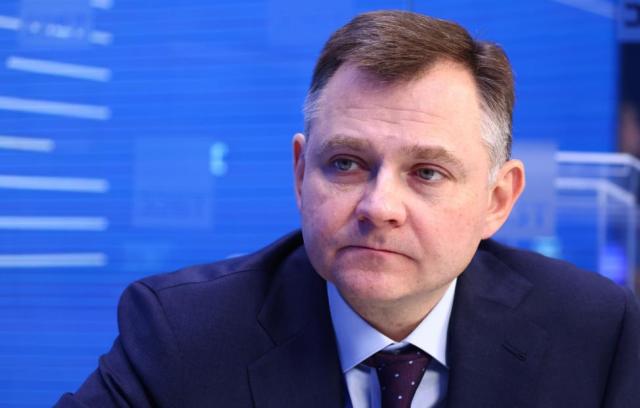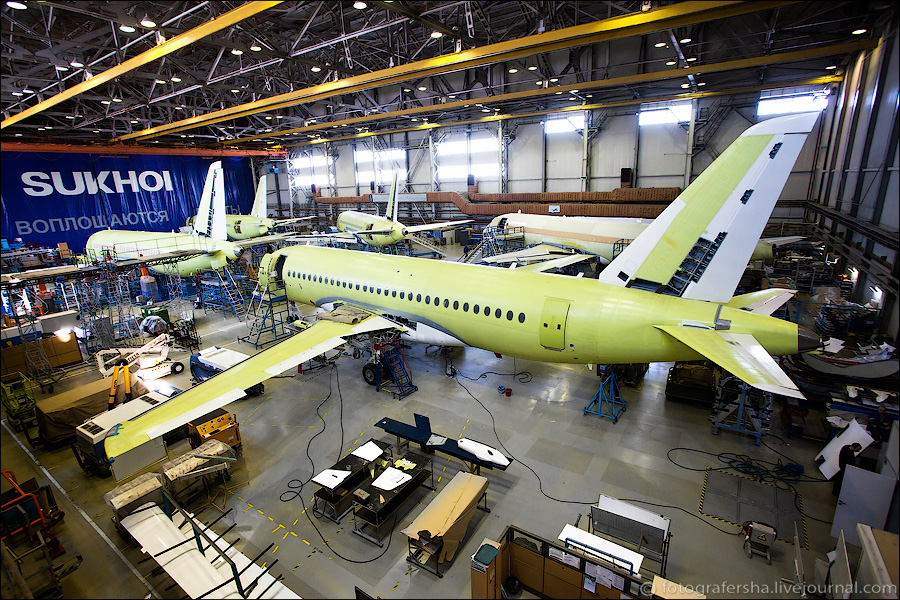Russian import-independent Superjet 100 and MS-21 aircraft will soon begin to replenish the fleets of domestic airlines. Yuri Slyusar, CEO of the United Aircraft Corporation, spoke about the future of the Russian aircraft industry in an interview with TASS during the SPIEF-2023 about when the updated Superjet will make its first flight, how many aircraft are planned to be delivered next year, what the new Tu-214 will be like, about the future of the Russian aircraft industry.
— Shortly before the SPIEF, it became known that the new Superjet will soon fly with French-Russian SaM146 engines. Perhaps there are already more precise dates?
— I would not name the exact dates yet. We have come to the final stage of preparation for the first flight, namely, the transfer of the aircraft to the flight test station. This means that the aircraft is fully assembled.
The aircraft begins preparing for the first flight already according to the procedure of the flight test station. Russian systems have already been installed on this aircraft, but the PD-8 engine is still being tested in parallel at a flying laboratory. We are just starting to receive Russian engines for installation on the second prototype. Therefore, we will start flights with a French engine for now. The second aircraft, which we will connect to the tests in the fall, will be with Russian engines. We need to ensure that an addendum to the type certificate is received in a very short time.
— How are things now with the maintenance of the SaM146 engine? The French left, it probably became more difficult to serve him.
— Our colleagues from the UEC are working on this first of all. The total fleet of intensively flying aircraft is one and a half hundred cars, it is intensively flying (we have Red Wings and Azimuth in the leaders in terms of flight volume on Superjet, indicators in different periods reach 350 hours a month, almost 12 hours a day). And at the same time, the serviceability of the engines can be maintained. Despite the abrupt break in relations with the French and the termination of supplies, the joint efforts of a number of companies — our partners and colleagues managed to establish the production of the most frequently worn spare parts, their installation.
— About the abrupt departure of the French. There is an example of Russian Railways, which are suing Siemens because the latter has not fulfilled contractual obligations. Most likely, Snecma also failed to fulfill contractual obligations. Do you plan to demand a penalty from them through the court?
— We still have advances for which we did not receive the products. We still have unprocessed services, which are also paid for, which did not come here. We still have technical support obligations that have not been fulfilled. Over the years, a whole system of relationships based on a contractual basis has been formed. Of course, we have launched all legal procedures that are provided for by law.
Unfortunately, there is little hope that they will give us any result - this is a common practice of the sanctions war when cooperation with Western companies and with states as a whole is severed. Nevertheless, we have launched all legal procedures.
— So these are lawsuits to the court, and most likely not to the Russian one?
— Not in Russian. We are trying to defend our legitimate interests by all available means.
— Returning to the current projects of the UAC, the Tu-214 aircraft, at what stage is the project now?
— Here we have two processes. The first is the increase in serial production. Before that, we made one or two planes a year in the interests of special customers. Now we need to reach 10, and then 20 aircraft per year.
Therefore, there is a lot of work ahead, a whole program of technical re-equipment, the elimination of technological bottlenecks in the enterprise, in equipment, in hiring personnel and in working with cooperation. So for the Tu-214, for the Kazan plant, this is such a serious amount, of course, taking into account the fact that the plant is still strategic aviation.
There are still some individual items that need to be replaced with domestic analogues. The Tu-214 has a small list of them, but some individual items managed to appear during production. This is, for example, part of the interior equipment. Our goal is to reach ten aircraft per year by 2025.
— Is there any new version of the Tu-214 implied?
— This is a series of certain changes that will occur in the appearance. Plus, we want to get a certain improvement in the functionality of certain systems. Globally, the process of deep modernization of the Tu-214, with the creation of a shortened version and a version with an increased flight range, with the implementation of new navigation modes, the transition to, relatively speaking, the next generation of Tu-214 aircraft is a separate topic. No decision has been made on it yet. But we are working on it, forming proposals. We hope that we will be able to get support here, to expand this process.
— Will you make a separate brand for this upgraded aircraft? I just remember that we periodically want to update the brand of our entire aircraft line.
— We have no such plans for Tupolev.
— As for MS-21. Is the volume of deliveries in 2024 still planned in the amount of six aircraft?
— Our task now is to get the main systems developed, manufactured, tested by our colleagues from the cooperation, and install them on the aircraft. By the end of the year, we must ensure the first flight of a fully Russian MS-21 aircraft with a PD-14 engine, with all Russian systems, in the form in which we will certify. And then, during 2024, to conduct a test program on three experimental aircraft. By the end of 2024, we have to hand over six aircraft to the customer.
— Manturov recently announced that a new wide-body aircraft will be created in Russia, and told about the promising development of TsAGI. Does the UAC now — after all, you are facing a huge complex of problems, tasks that need to be solved - have the resources to create promising developments?
— Our colleagues from TsAGI and NIC Zhukovsky are engaged in aircraft of the future, based on the scientific groundwork that they create. Our design engineers are also constantly working on improving existing products and on new concepts. If we talk about a wide-body aircraft, then, of course, Denis Valentinovich also mentioned this, the project to modernize the Il-96 aircraft, it remains on our agenda. The IL-96-400M aircraft is now preparing for its first flight. This will take place, I think, soon. The IL-96 plane, I am sure, has not yet said its word. In an upgraded form, this is quite an interesting car. We are continuing negotiations with airlines. While we cannot boast of specific contracts, but work in this direction is underway. As for creating a version with the possibility of remotorization, we are considering these options
But I would like to say that we are also considering a long—haul narrow-body aircraft, a kind of conditional analogue of the A321 XLR, in order to be able to almost non-stop flight Moscow - Vladivostok. This, on the one hand, solves the issue of transport connectivity, and on the other hand, does not require creating a product completely from scratch.
— I understood correctly, there is an IL-96-400M, the idea of a twin-engine version of the IL-96 on the PD-35 has not been removed from the agenda separately. And along with this, most likely, a certain version of the MS-21 is being worked out, which will be… That is, MS can get a long-haul version?
- yes.
































